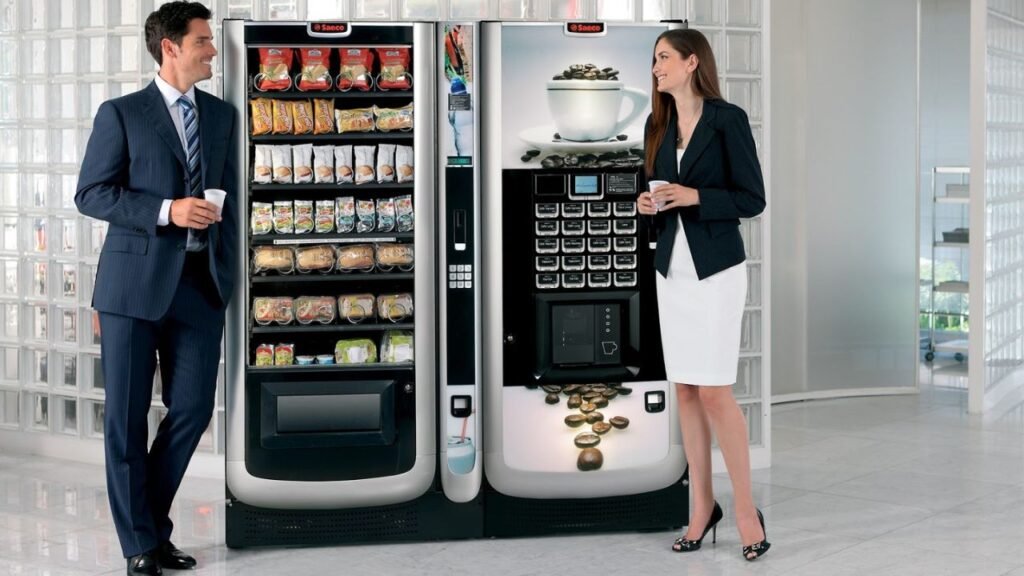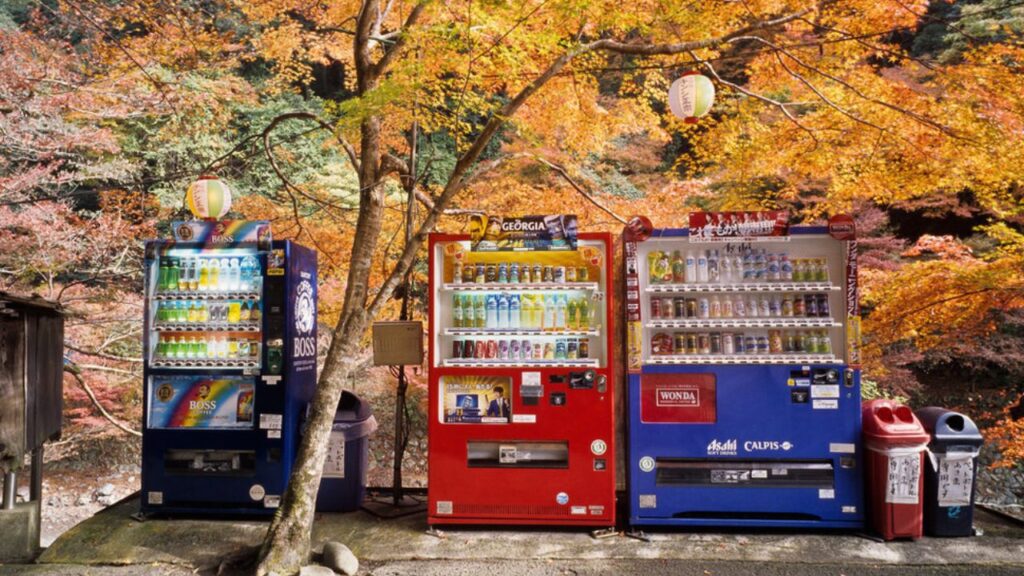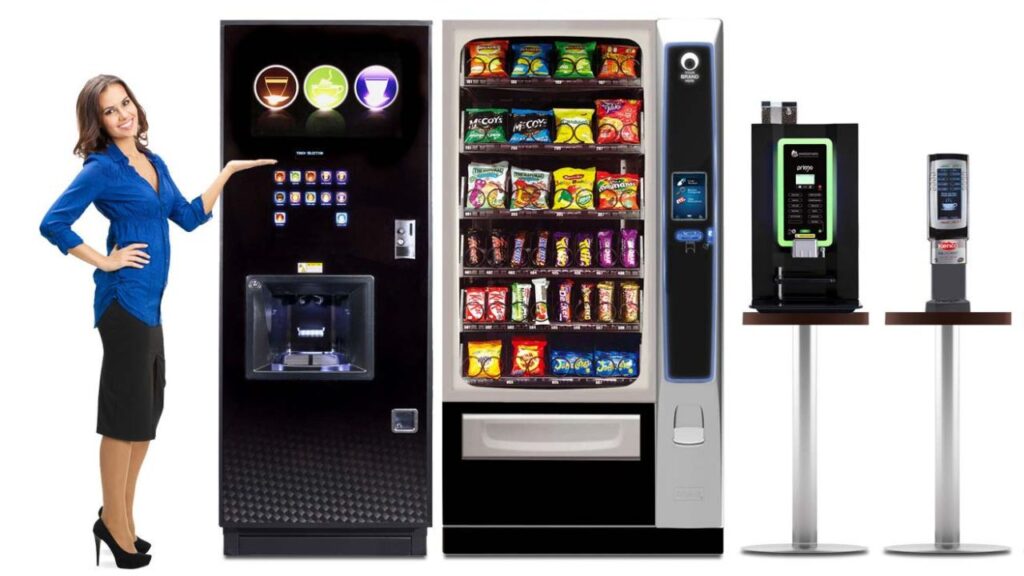Too Many Transactions Vending Machines have come a long way from merely dispensing snacks and beverages; they have evolved into sophisticated systems with advanced technologies. However, with progress comes challenges, and one such issue that has surfaced in the vending machine industry is the phenomenon of “Too Many Transactions.” In this article, we will delve into the intricacies of this challenge, exploring its impact, causes, and potential solutions.
Too Many Transactions Vending Machine
Once simple dispensers of snacks and drinks, vending machines now grapple with the challenge of “too many transactions.” This phenomenon, marked by an unexpected transaction surge, poses potential disruptions to the user experience and machine functionality. Addressing this issue requires a comprehensive approach, from payment processing hurdles to user behavior analysis. In this article, we explore the impact, causes, and solutions to strike a balance in the evolving landscape of vending machine technology.

Rising Demand
As vending machines continue to evolve and integrate into various aspects of our daily lives, the rise in demand for their services is a natural consequence. The convenience they offer and technological advancements have caused an unheard-of spike in user interaction.
However, this escalating demand has brought about challenges, particularly concerning the “too many transactions” phenomenon in vending machines. The increased foot traffic around vending locations shows the upsurge in demand. Whether in office buildings, public spaces, or even unconventional locations, people are relying on vending machines for quick and accessible solutions to their needs.
The demand is driven by the need for snacks and beverages and a diverse array of products, from personal care items to electronic gadgets. This surge has a cascading effect on vending machine operations. The machines, designed for efficiency and speed, are now facing the pressure of handling an overwhelming number of transactions within short timeframes.
Continuous and high-frequency interactions are challenging the traditional model of intermittent usage and pushing the limits of the machine’s capabilities. Vending machines with cutting-edge features like touchscreens, facial recognition, and real-time inventory tracking are becoming increasingly popular.

Technical Overload
The concept of a “too many transactions vending machine” introduces the critical issue of technical overload. As demand for vending machines continues to soar, the technical infrastructure supporting these automated dispensers faces unprecedented stress, leading to a cascade of challenges.
The advanced technology embedded in modern vending machines is at the heart of the issue. Once designed to handle a moderate number of transactions, these machines are now grappling with the sheer volume of interactions from an increasingly tech-savvy consumer base. While enhancing the user experience, integrating touchscreens, payment systems, and real-time inventory tracking strains the underlying technical architecture.
One of the primary consequences of technical overload is the potential for system errors and downtimes. As the frequency of transactions surpasses the designed capacity, vending machines may need help to process requests efficiently. This can result in delays, leaving customers frustrated and impacting the overall reliability of the vending service.
Maintenance Challenges
The surge in transactions within vending machines brings forth a set of maintenance challenges that demand immediate attention. As these automated dispensers experience an unprecedented number of interactions, the need for regular maintenance escalates significantly. One of the primary challenges lies in the wear and tear of mechanical components.
The continuous operation of vending machines, especially in high-traffic areas, accelerates the deterioration of moving parts. Regular maintenance checks become essential to address issues like jammed dispensers, coin or bill acceptor malfunctions, and other mechanical glitches that may impede the machine’s smooth functioning.
Applying system patches and software upgrades is essential to ensuring the technological infrastructure manages the higher transaction volume. Failure to keep the software up-to-date may result in system errors, compromising the overall user experience and potentially leading to downtime. Additionally, the heightened demand for vending machine services requires more frequent restocking.
Vending Machine Popularity
Once mere dispensers of snacks and drinks, vending machines have evolved into indispensable conveniences, reshaping consumer habits globally. From bustling urban centers to remote corners, their ubiquity is a testament to the convenience they offer. These automated wonders cater to diverse needs, offering everything from healthy snacks to tech gadgets.
The allure lies in their accessibility, time efficiency, and evolving product diversity. Technological integration, including cashless payments and smart features, propels their popularity further. As society embraces a fast-paced lifestyle, vending machines are silent sentinels, meeting demands efficiently. The future promises even more exciting innovations, ensuring these sleek dispensers remain integral to our daily routines.

Burstiness in Vending Machine Transactions
The realm of vending machine transactions is not immune to the intriguing concept of burstiness, where activity experiences sudden spikes followed by lulls. This phenomenon reveals a complex story behind the scenes, created by dynamic customer behavior. During peak hours, bustling with activity, vending machines witness a transaction surge as people seek quick, on-the-go solutions. Conversely, quieter periods reflect a lull in usage.
Understanding and adapting to this burstiness is pivotal for vending machine operators. Technological advancements, such as predictive analytics and real-time monitoring, empower operators to optimize restocking, ensuring uninterrupted service during high-demand intervals. Navigating the ebb and flow of burstiness is a challenge and an opportunity for innovation in this ever-evolving landscape of automated convenience.
Challenges Faced by Vending Machine Operators
Operating vending machines presents a unique set of challenges that operators must adeptly navigate for sustained success. Maintenance issues, ranging from technical glitches to product jams, demand swift resolution to avoid service disruptions. Security concerns, including vandalism and theft, pose risks that operators must mitigate effectively.
The competitive market adds pressure, necessitating strategic marketing tactics to stand out. Adapting to consumer trends and preferences is another hurdle, especially in an era where health-conscious choices are prioritized. Despite these challenges, growth opportunities exist through regular maintenance, robust security measures, and innovative approaches to product offerings. The resilience and adaptability of vending machine operators are key in overcoming these obstacles, ensuring continued convenience for consumers in an ever-evolving landscape.
Future-Proofing Vending Machines
As technology advances at a never-before-seen rate, the future of vending machines lies in strategic future-proofing. Innovations in design, sustainability, and user experience are essential for staying relevant. Smart vending machines with IoT capabilities redefine convenience with personalized interactions and real-time data insights.
Sustainability takes center stage, with eco-friendly materials and energy-efficient features becoming industry norms. Design innovations not only enhance aesthetics but also improve functionality. Future-proofing also involves anticipating challenges like maintenance and security and addressing them proactively through advanced monitoring systems.
Learning from Global Trends
Observing global trends in vending machine transactions unveils invaluable insights for operators navigating this dynamic landscape. Worldwide, the shift towards cashless transactions has reshaped the vending experience, emphasizing convenience and speed. Touchscreen interfaces, IoT integration, and smart vending technologies are gaining prominence, reflecting a demand for interactive and efficient user interfaces.
Health-conscious choices are influencing product offerings, with vending machines globally adapting to offer organic snacks and beverages. Cultural nuances impact design and product preferences, emphasizing the need for localized approaches. Learning from these global trends equips vending machine operators to anticipate and cater to evolving consumer expectations, fostering a more responsive and adaptable industry that thrives on the collective learning derived from a diverse and dynamic global market.

Recommendations for Businesses
For businesses venturing into the world of vending machines, strategic considerations can make all the difference. Embrace technological integration by opting for cashless payment options, ensuring seamless transactions and appealing to modern consumer preferences. Invest in user-friendly touchscreen interfaces to enhance the overall experience and capture attention. Implement IoT technology for real-time monitoring, facilitating proactive maintenance and stock management.
Diversify product offerings to cater to changing consumer trends, including healthier snack options and eco-friendly products. Customize vending machine designs to reflect brand identity, maximizing branding opportunities. Regularly update and innovate to stay ahead in the competitive market. By incorporating these recommendations, businesses can not only capitalize on the popularity of vending machines but also create a memorable and efficient experience for consumers, translating into sustained success in the automated retail landscape.
Impact on Small Businesses
Vending machines are not just a convenience for consumers; they can be a game-changer for small businesses. These automated wonders offer a low-cost entry into retail for entrepreneurs, providing a platform to showcase and sell products. For small businesses, vending machines act as 24/7 ambassadors, reaching customers in various locations without the overhead costs of traditional stores.
The impact extends beyond sales, offering branding opportunities and exposure. As technological advancements make vending machines more versatile, small businesses can adapt and diversify their offerings. The result is not just an increase in revenue but an enhanced presence and accessibility that propels the growth of small enterprises. In an ever-evolving market, embracing the potential of vending machines becomes a strategic move for small businesses looking to thrive and make a significant impact.
Conclusion
In the bustling landscape of vending machine transactions, the journey is marked by peaks of demand and quiet lulls. The evolving popularity of these automated retail wonders reflects not just convenience but a dynamic adaptation to consumer needs. Facing challenges head-on, operators have learned to overcome maintenance hurdles, address security concerns, and thrive in a competitive market. Future-proofing strategies, encompassing technological innovations and sustainability, promise an exciting road ahead. Globally, trends in transactions offer crucial insights, shaping the landscape and influencing product offerings. For businesses, especially small enterprises, vending machines emerge as powerful tools for growth, transcending traditional retail barriers. As we navigate this transaction maze, the impact of vending machines on businesses and consumers alike remains undeniable—a seamless blend of innovation, convenience, and the promise of a more accessible future.
FAQs
What causes an influx of transactions in vending machines?
The surge in transactions can result from peak hours, increased foot traffic, or specific events that draw more people to the vending area.
How do vending machine operators manage high transaction volumes?
Operators employ advanced monitoring systems to track transaction patterns, ensuring timely restocking and maintenance during peak periods.
Are there technological solutions to handle too many transactions?
Yes, advancements like real-time monitoring and predictive analytics help operators anticipate transaction surges, facilitating proactive measures to prevent disruptions.
Do frequent transactions impact the lifespan of vending machines?
While frequent transactions may lead to wear and tear, regular maintenance and robust design can extend the lifespan of vending machines.
Can businesses benefit from too many transactions in vending machines?
Yes, increased transactions mean higher revenue for businesses. Businesses must optimize operations to handle the influx efficiently.
